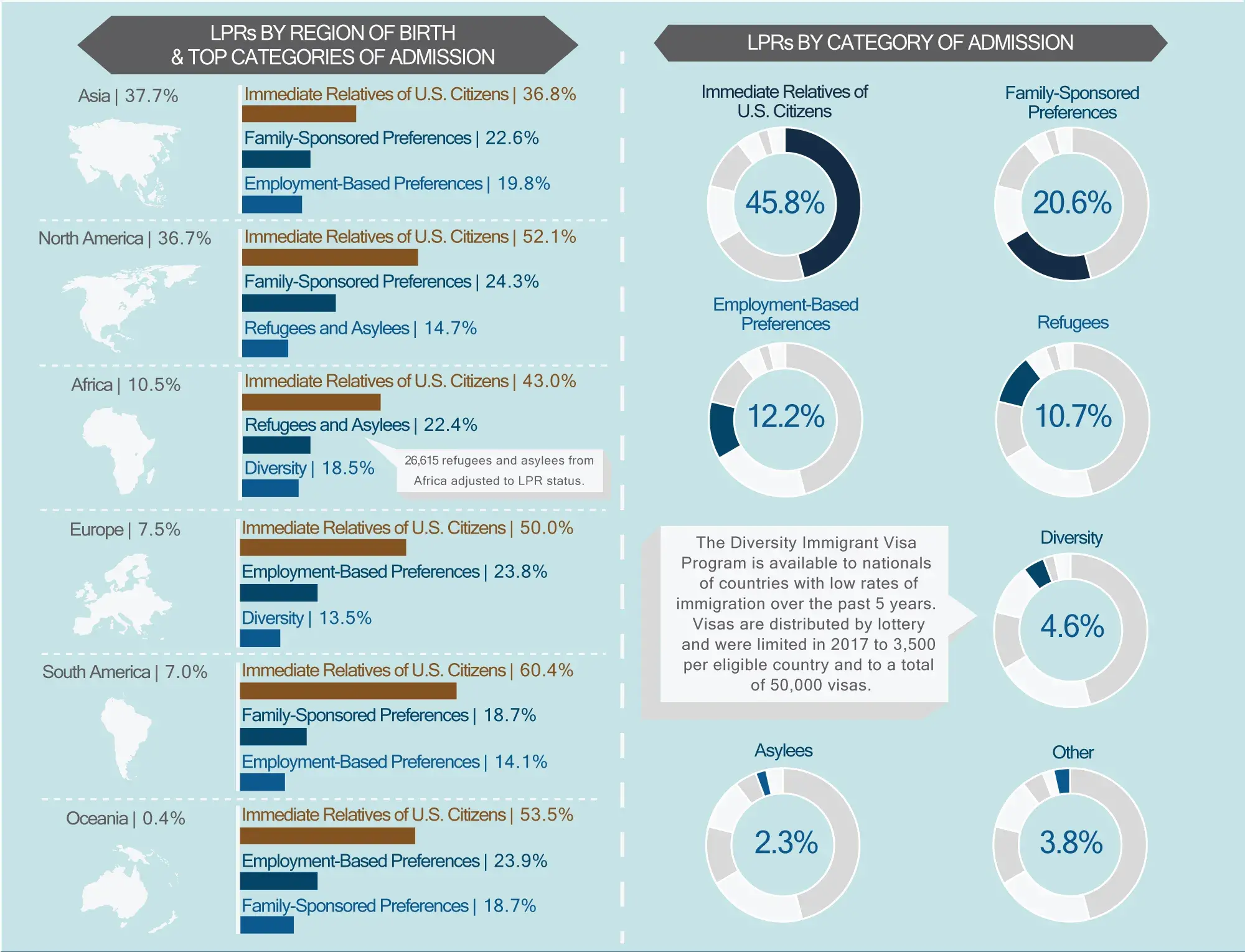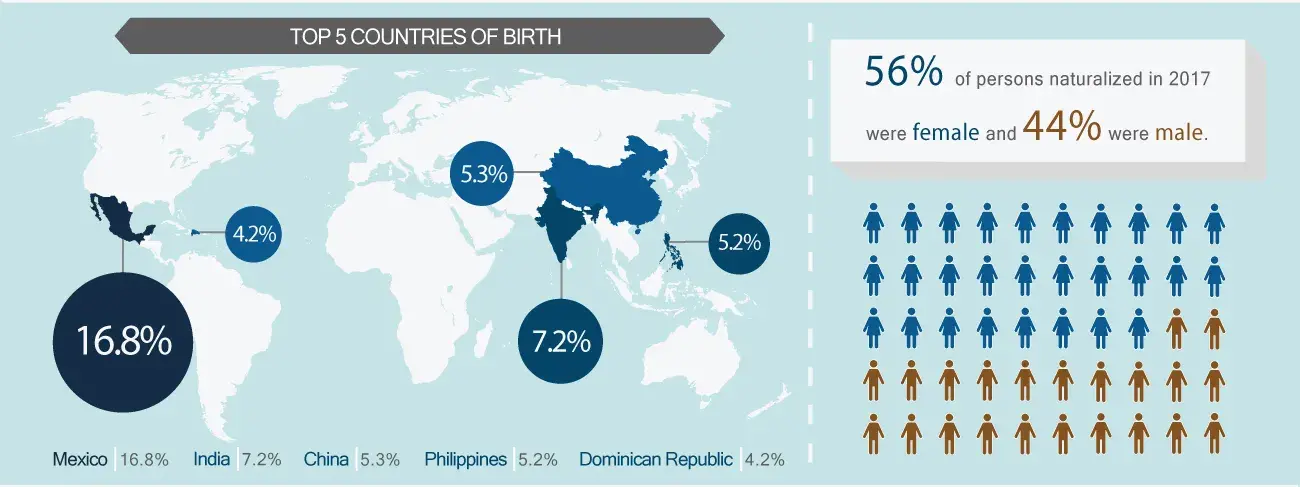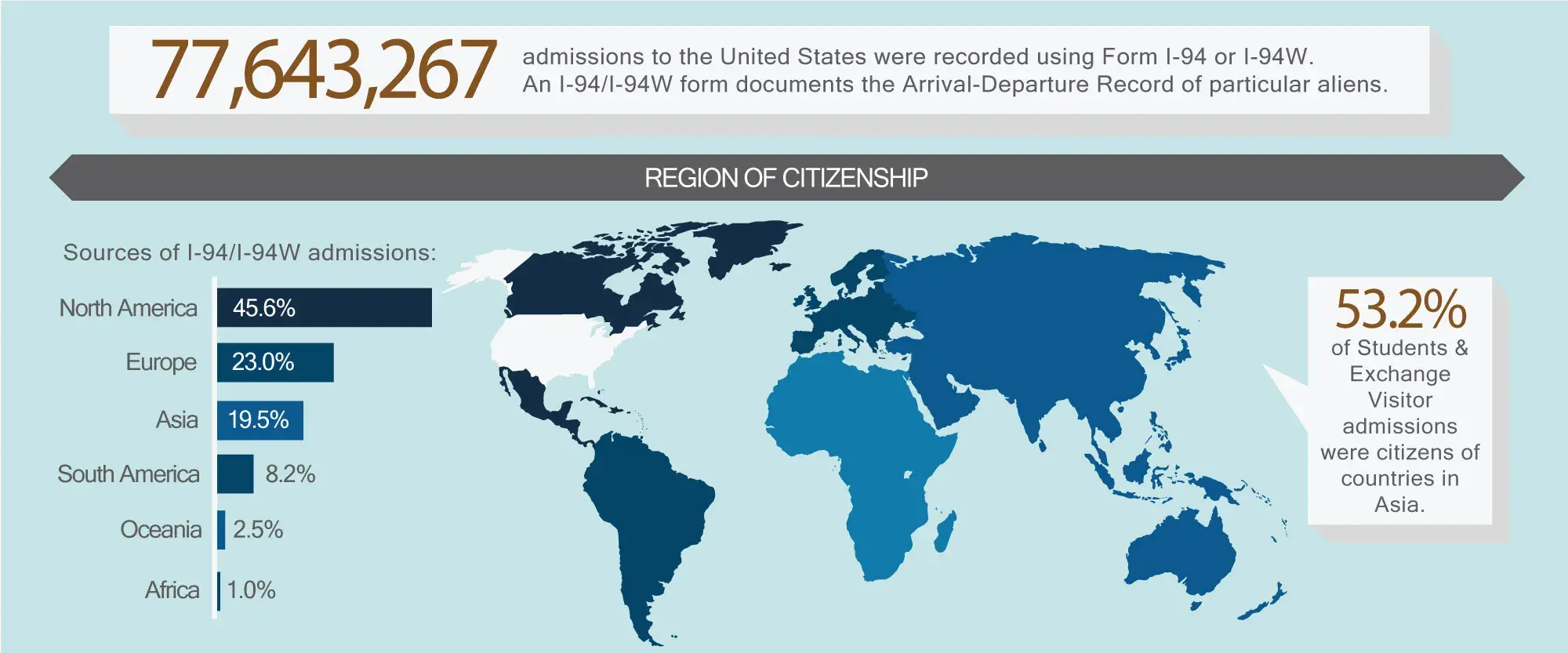This gallery contains infographics produced by the Office of Immigration Statistics to make data provided by Department of Homeland Security components more readily available to the public. Infographics describe key immigration topics such as the number and characteristics of lawful permanent residents, refugees and asylees, naturalizations, nonimmigrant admissions, and immigration enforcement actions. Infographics for 2017 may be viewed below or downloaded.














